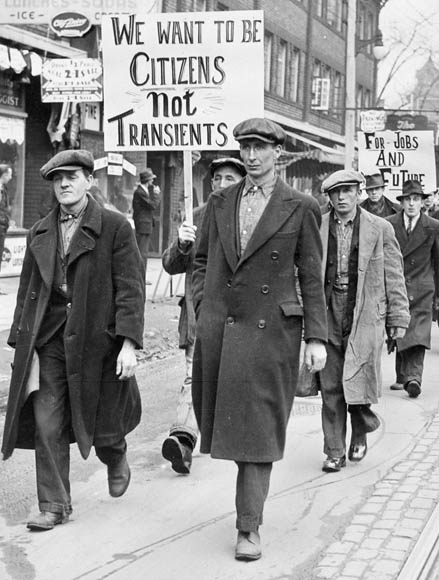Welcome George!
What is the Main Cause of Residential Foreclosures?
 Courtesy of Washington’s Blog
Courtesy of Washington’s Blog
The foreclosure problem in American is not just subprime mortgages. True, banks have been holding on to their foreclosed properties for months, but now they’re getting ready to release them onto the market, which could depress prices for existing homeowners, further driving them underwater. But that’s not what I’m talking about.
There are huge tidal waves of defaults on option arm, alt-a, and other types of loans coming (see this and this).
But even that is arguably not the main problem.
Perhaps the biggest problem is that the crash in real estate and rising unemployment together form a negative feedback loop. As McClatchy and the Associated Press note, foreclosures rise as jobs and income drop.
As former chief IMF economist Simon Johnson points out, there is a vicious cycle also exists between unemployment and property foreclosures:
Unemployment is always a lagging indicator, and given the record low number of average hours worked, it will turn around especially slowly this time. Until then, people will continue to lose their jobs and wages will remain flat, and any small rebound in housing prices is unlikely to help more than a few people refinance their way out of unaffordable mortgages. So unless the other part of the equation – monthly payments – changes, the number of foreclosures should just continue to rise.
Indeed, the Washington Post notes:
The country’s growing unemployment is overtaking subprime mortgages as the main driver of foreclosures, according to bankers and economists, threatening to send even higher the number of borrowers who will lose their homes and making the foreclosure crisis far more complicated to unwind.
And see this.
Some economists give 5% as the magic number: when unemployment declines to 5%, then unemployment will no longer be such a huge contributor to foreclosures.
But Moody’s forecasts that unemployment will not go back down to 5% until 2014.
Similarly, the the chief economist for the U.S. Chamber of Commerce – Martin Regalia – "thinks that it could be five years before the U.S. economy generates enough jobs to overcome those lost and to employ the new workers entering the labor force", according to McClatchy.
Indeed, unemployment could be a problem for many years to come.


